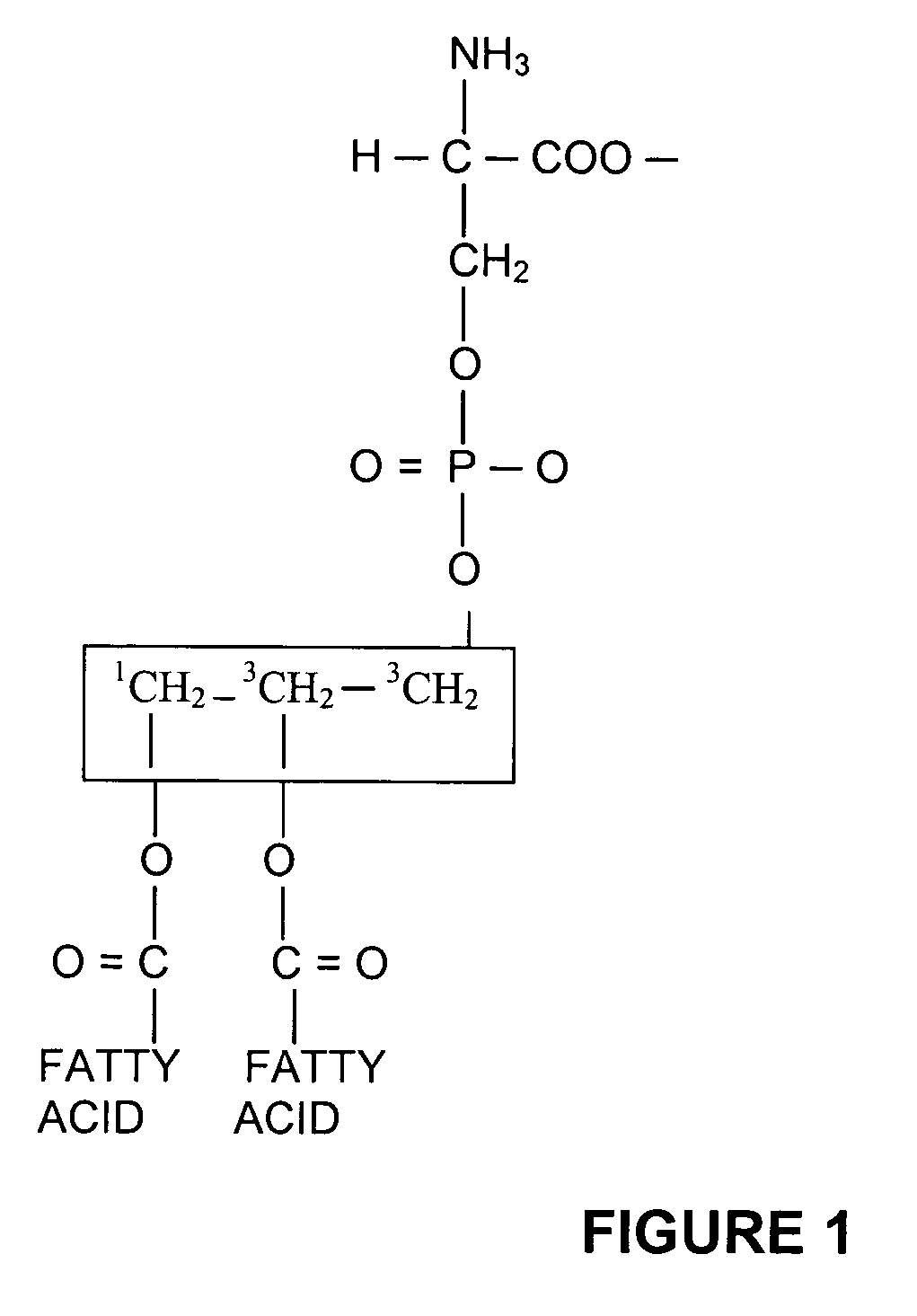Food product for increasing the cognitive functional capacity
a cognitive functional capacity and food technology, applied in the field of food products, can solve the problems of impairments that have a substantial negative effect on the functional processes of the brain, interfere with various physiological and biological cell functions, and affect the cognitive region
- Summary
- Abstract
- Description
- Claims
- Application Information
AI Technical Summary
Benefits of technology
Problems solved by technology
Method used
Image
Examples
Embodiment Construction
[0031] FIG. 1 shows the molecular structure of phosphatidyl serine.
[0032] Phosphatidyl serine is a member of the group of phospholipids. The phospholipids are divided into four groups, the lecithins, the kephalins, the phosphatidyl inosites, and the sphingomyelins. The glycerol phospholipids of the lecithin and kephalin group have the same structure: The first primary and the secondary hydroxyl group of the glycerol is esterified with a fatty acid, the second primary hydroxyl group is esterified with phosphate.
[0033] The phosphate in turn is esterified with a hydroxyamino compound; here, the nitrogen bases choline, ethanolamine, and serine are found. Phosphatidyl serine is a member of the group of kephalins and is therefore also known by the name of "serine kephalin."
[0034] Chemically speaking, phosphatidyl serine thus consists of fatty acids, glycerol, phosphate, and serine.
[0035] Apart from the production of phosphatidyl serine from bovine brain, the following two preferred manufa...
PUM
| Property | Measurement | Unit |
|---|---|---|
| weight | aaaaa | aaaaa |
| weight | aaaaa | aaaaa |
| wt % protein | aaaaa | aaaaa |
Abstract
Description
Claims
Application Information
 Login to View More
Login to View More - R&D
- Intellectual Property
- Life Sciences
- Materials
- Tech Scout
- Unparalleled Data Quality
- Higher Quality Content
- 60% Fewer Hallucinations
Browse by: Latest US Patents, China's latest patents, Technical Efficacy Thesaurus, Application Domain, Technology Topic, Popular Technical Reports.
© 2025 PatSnap. All rights reserved.Legal|Privacy policy|Modern Slavery Act Transparency Statement|Sitemap|About US| Contact US: help@patsnap.com


